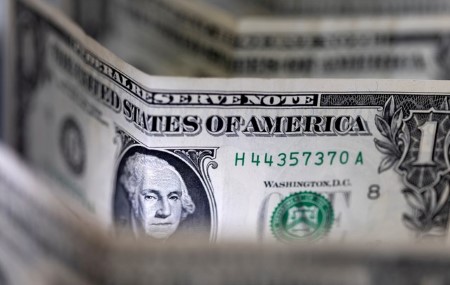




Monthly Economic Update: One for the road
 DOWNLOAD
DOWNLOAD

Inflation Update: Still low, still slow
 DOWNLOAD
DOWNLOAD

Philippines Trade Update: Exports momentum continues
 DOWNLOAD
DOWNLOAD


Foreign central banks are shrinking US asset exposure: McGeever

ORLANDO – As debate rages around ‘de-dollarization’ and the world’s appetite for dollar-denominated assets, one major cohort of overseas investors appears to be quietly backing away from US securities: central banks.
That’s the conclusion to be drawn from the New York Fed’s latest ‘custody’ data, which shows a steady decline in the value of Treasuries and other US securities held on behalf of foreign central banks.
There are many ways to gauge foreign demand for US assets, and they often send conflicting signals. Moreover, the broadest and most accurate measures, like US Treasury International Capital (TIC) or the International Monetary Fund’s ‘Cofer’ FX reserves data, come with a long lag of two months or more.
The New York Fed custody holdings figures are weekly, which is as ‘real time’ as it gets in the world of central bank flows.
These figures last week showed that the value of US Treasuries held at the New York Fed on behalf of foreign central banks fell to USD 2.88 trillion. That’s the lowest since January, and the USD 17.1 billion decline was also the biggest fall since January.
Including mortgage-backed bonds, agency debt and other securities, the total value of foreign central banks’ US custody holdings at the New York Fed last week dropped to USD 3.22 trillion, the lowest since 2017.
That figure has fallen by around USD 90 billion since March, just before President Trump’s ‘Liberation Day’ tariff debacle on April 2, with more than half of the decline coming from Treasuries.
If these moves are representative of broader trends, then FX reserve managers are reducing their exposure to US bonds, as a share of their overall holdings and in nominal terms too.
MURKY PICTURE
It’s not easy to get a firm handle on the exact composition of central banks’ dollar-denominated assets, which are worth trillions and are spread across multiple sectors, jurisdictions and continents. This is why different cuts of central bank data can tell different stories.
For example, the latest TIC data show that foreign holdings of US Treasuries rose to a record USD 9.05 trillion in March, with official sector holdings increasing as well. The official sector held nearly USD 4 trillion of bills and bonds, around 45% of all foreign exposure.
But these figures are nearly three months out of date, and foreign demand for Treasuries in recent months – in the secondary market and, more recently, at auction – has been driven by private sector institutions, not the official sector.
There are large pools of ‘hidden’ FX reserves too potentially worth trillions of dollars, held in offshore accounts, overseen by quasi-official entities like sovereign wealth funds or, in the case of China, state banks.
Meghan Swiber, director of US rates strategy at Bank of America, says the fall in custody holdings is a warning sign, especially as it has been accompanied by a modest decline in foreigners’ usage of the Fed’s overnight reverse repo (RRP) facility.
When Treasuries mature, foreign central banks will often park the cash at the RRP. But they haven’t been doing that lately, Swiber says, meaning both their Treasury holdings and overnight cash balances at the Fed are falling.
“We worry about foreign demand going forward,” Swiber wrote on Monday, also pointing out that it’s “unusual” for reserve managers to reduce their US Treasury holdings when the dollar is weakening. “This flow likely reflects official sector diversification away from dollar holdings.”
The USD 28.5 trillion Treasury market is deep and liquid, and central banks remain significant participants in it. They are cautious and careful by nature, meaning any changes to their holdings will be gradual.
But the weekly custody data suggest some central banks may already be getting that ball rolling.
(The opinions expressed here are those of the author, a columnist for Reuters)
(By Jamie McGeever; Editing by Jan Harvey)
This article originally appeared on reuters.com





 By Reuters
By Reuters